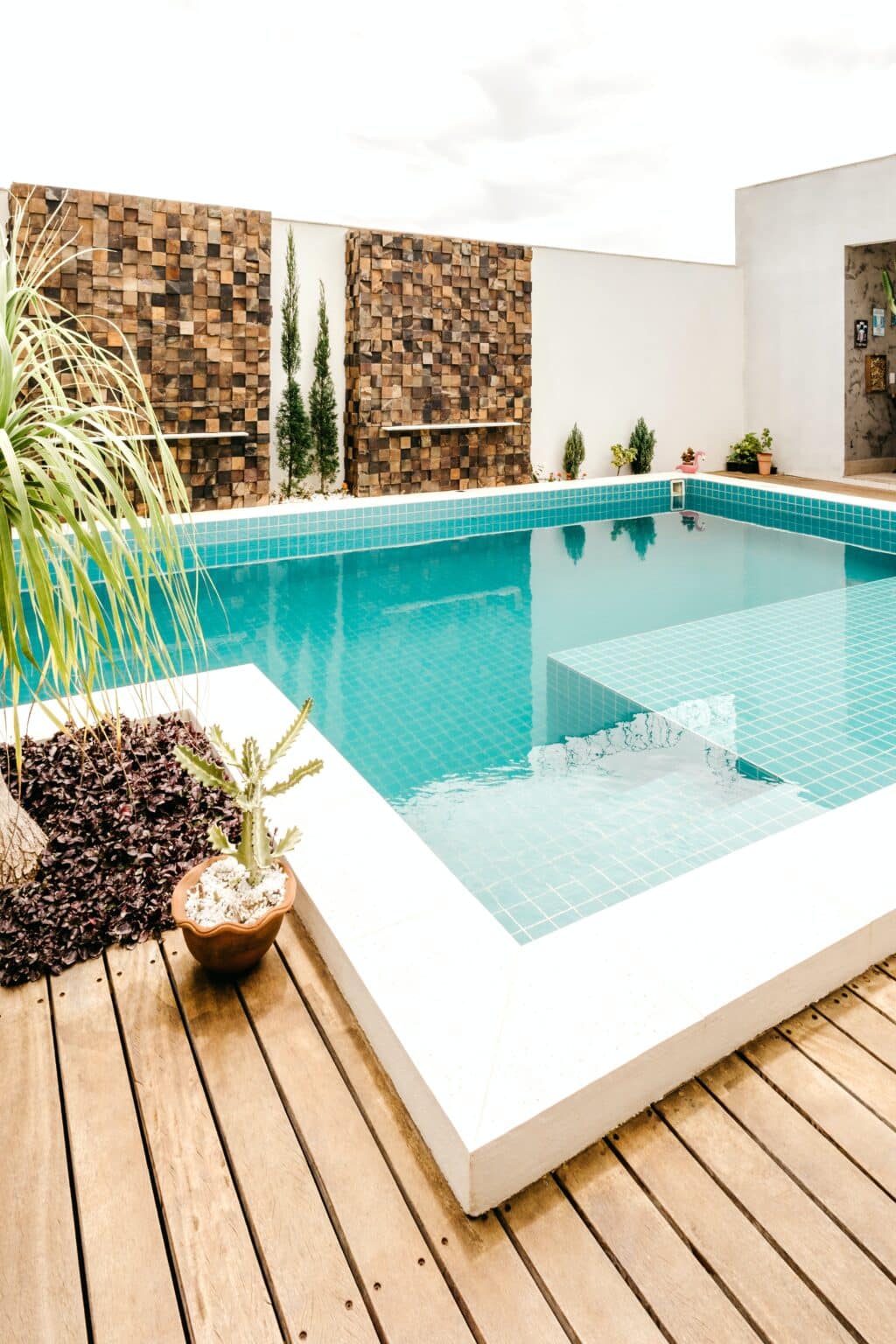When comparing available pool deck materials, it’s important to consider the exact materials you want in your project that combine design flexibility and beauty with strength and durability.
When choosing a pool deck material, consider key factors such as budget, safety, maintenance, durability, and how it will fit into your home and landscape.
Concrete is certainly not the only player in the game, but it offers several advantages that no other pool deck material can match, especially when it comes to versatility.
Different pool deck materials have their key pros and cons, but it’s important to choose a material that meets your specific needs. A good grip on the surface of the pool deck is especially important, so it is important to avoid slipping.
Pool deck surfacing materials can be slippery, especially when the tile is wet, but with concrete, there are many ways to improve grip without compromising decorative appeal.
These include using an open screed or buffer, applying a textured surface, or mixing in clean plastic sand before applying the sealant. Dark brick or tile pool decks can get very hot in the sun, but concrete reflects the sun’s rays and is comfortable for bare feet.
There are also decorative concrete liners that can significantly reduce the surface temperature of the pool deck. Pool deck covering materials of slabs and bricks are aesthetically pleasing, but installation can be expensive due to the labor required to install each unit individually.
But long, expensive, and painstaking work allows you to get amazing results. Decorative concrete gives you the freedom to choose the shape, size, color, and design of your pool deck environment.
It is important to make a comparison of pool deck surfaces because there are various options available, ranging from smooth polished concrete, ending with a pool deck surface with relief patterns imitating tiles, bricks, or stone.
You can also use a combination of decorative finishes for the pool deck, such as a combination of colored concrete with embossed or patterned edges or colored tiles with cut patterns. Explore pool deck material design ideas for more affordable, exciting design options.
All pool deck materials should be strong and durable, but the materials also require regular maintenance and regular cleaning. Blocks may change over time and require alignment or replacement. The gaps between the tiles also need to be cleaned regularly to prevent weeds from growing.
Poured concrete eliminates these problems and requires regular cleaning and sealing to maintain its visually appealing appearance. Learn the key principles for maintaining and cleaning your pool deck. Please note that pool deck materials have special performance requirements compared to conventional surfaces.
The pool deck environment must withstand constant exposure to water and aggressive chemicals. In addition, pool deck materials should not be slippery. All of these key criteria can be met by the chosen pool deck material.
There are a variety of shapes, sizes, colors, and finishes, from polished concrete to stamped patterns that reflect plain aggregate, tile, brick, natural stone, and even wood. You can also use a combination of decorative coatings.
Pool deck covering materials can be designed to blend in with your home’s exterior and surroundings.
IMAGE: UNSPLASH
Concrete Pool Deck
A concrete pool deck is a perfect choice for creating a pool that looks like natural slate, cobblestone, or brick. Concrete pool deck materials look like real stone, but this material is much easier to install and maintain. It can also be used for general pool deck surface treatment.
The most common method of painting a concrete surface for a pool deck is a special procedure that applies the desired and additional colors to the surface. Staining is often closely related to concrete and can accurately reproduce the color of natural stone and other materials.
Bright colors are especially popular in swimming pools because they reflect UV rays and keep the surface cool. There are different options for painting the concrete coating for the pool deck.
Wood Deck
Wood pool decking is often not a very practical solution for outdoor pools, as it cannot withstand pool chemicals and high humidity. If you prefer a wood look, you can seal and stain the concrete to look like wood planks.
Lasts longer, requires less maintenance, and is less susceptible to damage from chemicals, water, and UV rays.
Pavers
Cobblestone pool decks are a great choice for a pool because these materials are extremely durable, non-slip, and can look like natural stone or brick.
Pool deck pavers come in a variety of colors, shapes, and sizes, allowing you to create a design scheme that complements the shape and style of your pool. Not to be forgotten are the key benefits of relatively easy and simple pool deck paving.
Natural Stone
Natural stone has long been used to cover pool decks. Natural stone is a popular pool deck material due to its durability and refined appearance. Natural stone is an attractive and durable material for swimming pools. However, this material should be avoided in cold climates.
That’s because this affordable option is known to absorb water during cold winters, causing cracks and splits. Also, natural stone pool deck covering materials can be slippery and hot. Another problem with these materials is their high cost and difficulty of installation.
Rubber Pool Deck
Pool deck material designs that are made of rubber can be a great alternative to all the previous materials presented and can offer the same flexibility and versatility of design.
Simple installation, the durability of the structure, preventing the appearance of cracks during a long period of operation, the material can withstand different temperature conditions, these types of pool decks come in different patterns.
IMAGE: UNSPLASH
If you are interested in even more lifestyle-related articles and information from us here at Bit Rebels, then we have a lot to choose from.


COMMENTS